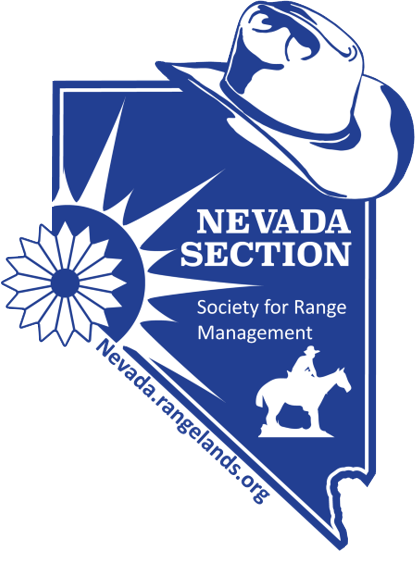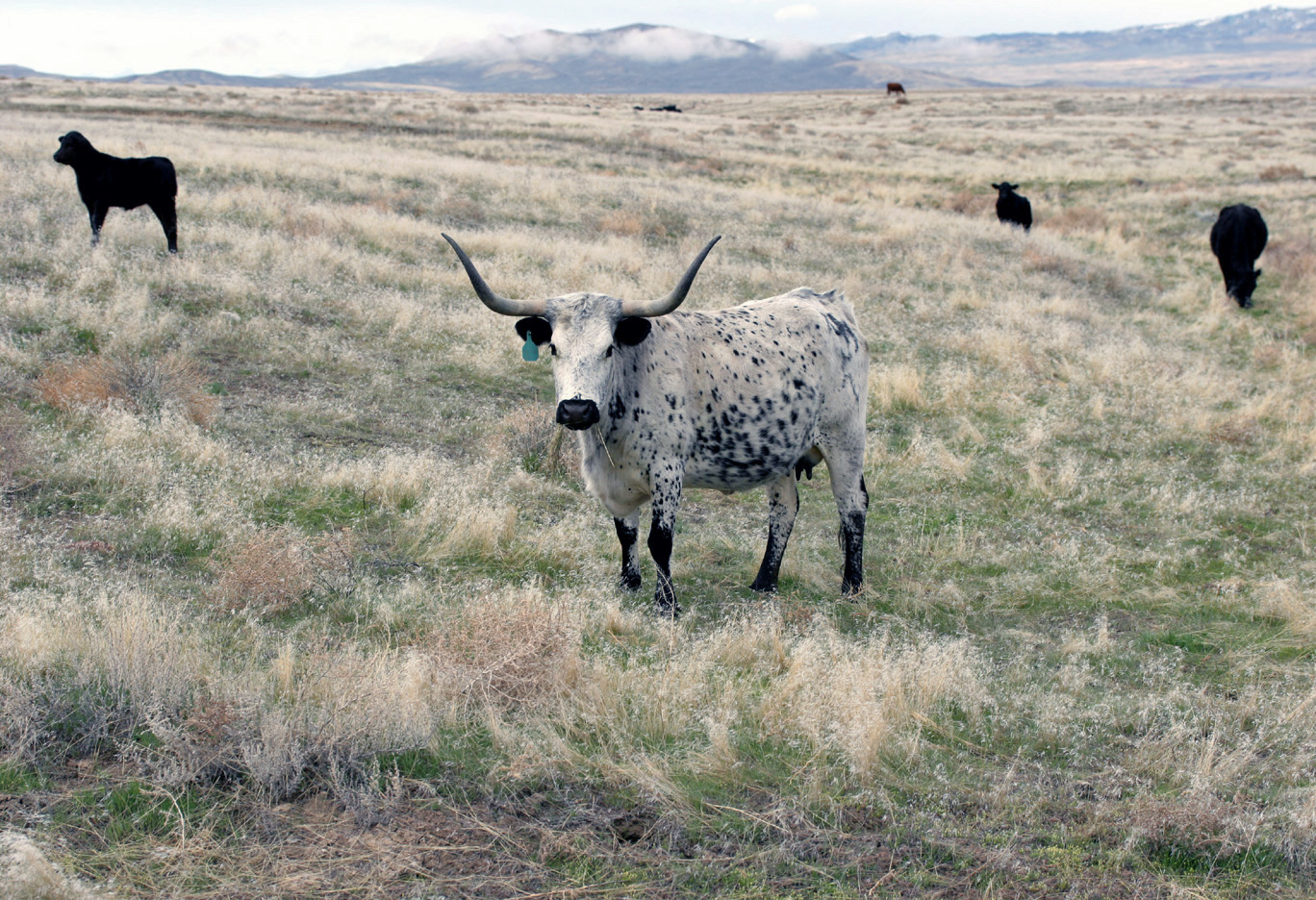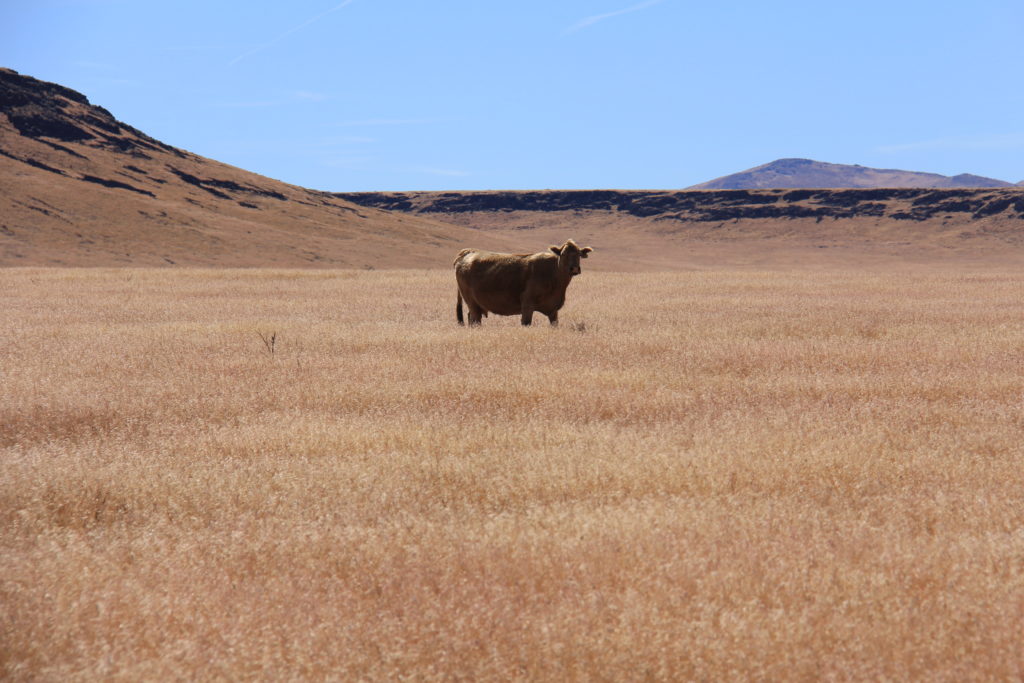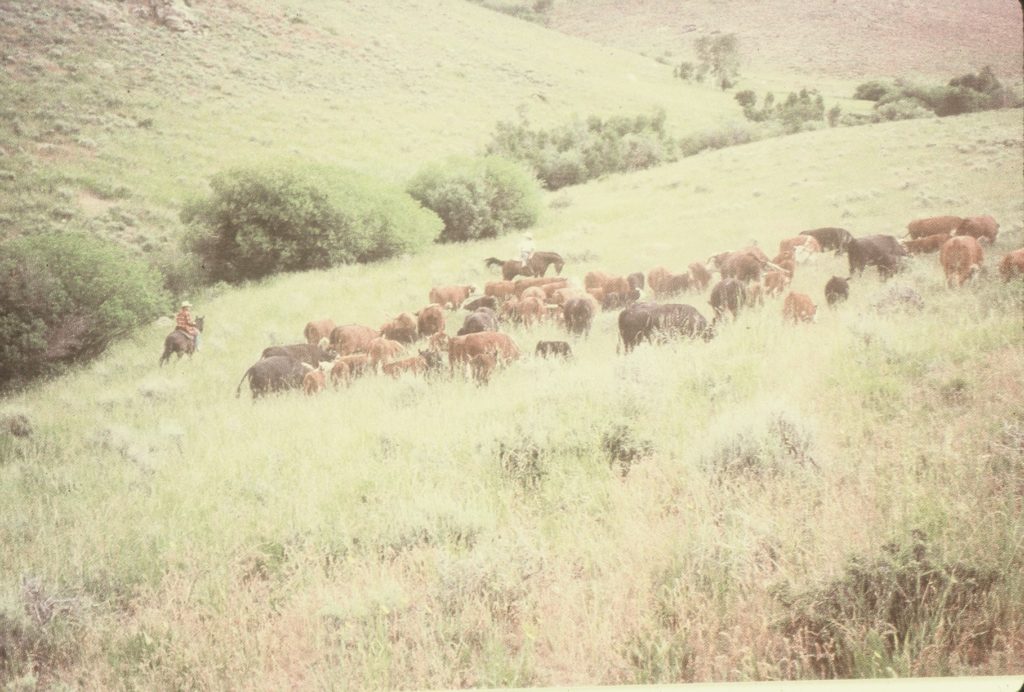 Cheatgrass has been a successful invader of the Great Basin largely because of a series of pre-existing conditions. These include: 1) evolution to sagebrush ecosystems in North America without highly competitive annuals, 2) evolution of cheatgrass in a similar potential environment on a different continent where agriculture had existed for millennia, 3) introduction of cattle into semiarid to arid environments in North America by ranchers who had no experience with temperate desert environments, 4) mechanization and subsequent expansion of cereal grain production in western North America, and 5) deep-seated inertia resisting the end of open public rangelands in the American West. These preconditions had to be aligned just so in space and time for cheatgrass to be successful.
Cheatgrass has been a successful invader of the Great Basin largely because of a series of pre-existing conditions. These include: 1) evolution to sagebrush ecosystems in North America without highly competitive annuals, 2) evolution of cheatgrass in a similar potential environment on a different continent where agriculture had existed for millennia, 3) introduction of cattle into semiarid to arid environments in North America by ranchers who had no experience with temperate desert environments, 4) mechanization and subsequent expansion of cereal grain production in western North America, and 5) deep-seated inertia resisting the end of open public rangelands in the American West. These preconditions had to be aligned just so in space and time for cheatgrass to be successful.
Was the success of cheatgrass in North America a result of accidental combination of events or were humans in some sense responsible? It was humans after all, who discovered that they could increase their food supply by domesticating certain herbivores. This domestication had advantages for both humans and animals as the herbivores used food not available to human consumers and turned it into high-quality digestible protein, which is often a limiting nutrient in human diets. Further, these animals were mobile and could cover long distances in search of forage (Fig. 1).
Figure 1. The domestication of large herbivores, cattle, provides humans with the necessity of high-quality digestible protein from herbage not consumed by humans.
Cheatgrass evolved in middle Asia, the same area where cattle, sheep, horses and goats are thought to have been domesticated. Working at a very early agricultural site in the mountains of Iran, archeologist Kent Flannery and botanist Hans Helbaek identified carbonized seeds recovered from fossil hearths. Flannery and Helbaek were able to follow the evolution of small grain crops, especially wheat and barley, from seeds that hunter-gatherers collected from wild grasses through the evolutionary process that produced modern cereal species. In their investigation, they reported that seed species that are considered weeds, occurred together with seeds of cultivated crops. Plants that could mimic cultural requirements of cereal grains were pre-adapted to be weeds in the fields of the earliest agriculturalists. They germinated at the same time as the cereal grains that were intentionally sown, completed their life cycle in the same amount of time, and produced seeds that were difficult to separate from the crop seeds. The fact that cheatgrass has persisted as a successful weed in cereal grain fields as farming has become more sophisticated strongly implies that its’ reproduction system is inherently adaptable.
Flannery and Helbaek also pointed out that the period during which the primitive residents of the site became framers rather than hunter-gatherers by examining the morphological changes in the bones of sheep and goats that accompanied domestication and selective breeding and were found in the same hearths that preserved carbonized seeds of evolving wheats and weeds. They reported that these same hearths from wild sheep and goats to domesticated animals coincided with carbonized seeds of annual weeds such as Russian thistle, medusahead, goat grass and annual brome grasses. Apparently, the exotic annual weeds that are so much a part of the ecology of the sagebrush/bunchgrass ranges of western United States have shadowed livestock since the dawn of domestication. It is also not surprising that these annual weed species would be associated with disturbances caused by grazing animals, therefore, their genetic makeup disposes them to be colonizers.
Cheatgrass is not the only weedy annual to come to North America rangelands from Asia. Many of the exotic weeds currently thriving in the Great Basin originated in Central Asia and the Irano-Turanian floristic region. Central Asia comprises the semi-arid region from northern China on the east to the Ob River on the west. It includes the northwestern provinces of China, Mongolia and southern Siberia. The Irano-Turanian floristic region begins to the east at the Ob River and extends west to the Caspian Sea. Its northern boundary is the steppe zone of Russia and its southern boundary is the Persian Gulf, therefore emphasizing the inherent potential of perennial species from these regions and the importance of using introduced perennial species from these regions that evolved to compete with invasive annuals such as cheatgrass in Great Basin environments. These regions are nearly synonymous with the Intermountain Area in terms of the range of environments they encompass. Portions of both areas are temperate deserts with areas of salt-influenced soils, and both feature vast landscapes dominated by semi-woody species of sagebrush and at lower elevations chenopod shrubs such as salt bushes and winterfat.
The most striking difference between Central Asia and the Great Basin is the tenure of livestock husbandry. The Great Basin first saw concentrations of domestic large herbivores a little more than a century ago, compared to portions of Asia where nomadic livestock husbandry has been in existence for perhaps 10,000 years.
Early historians of the Institute of Deserts in Ashabad, Turkmenistan describe early accounts of the development of livestock industries in Central Asia, “the development of irrigated agriculture permitted tremendous increases in human population density in very limited areas.”
The portion of irrigable land in Central Asia is about the same as that in the Great Basin, about 5% of the total landscape. Along with abundant food in irrigated areas came the development of more complex local societies. Eventually population growth outstripped the potential of the site to produce food while at the same time salinization of irrigated areas and overgrazing of adjacent grazing lands reduced productivity. Civilization brought significant changes as overutilization of resources brought poverty to the basic farmer along with wars for water and grazing resources. Individuals that were more inclined to be herdsmen rather than farmers ventured out into the deserts to find forage for their flocks and freedom from civilization. The biological constraints of the desert steppes forced herdsmen to move continually in search of available forage.
Ranchers in North America were quick to adopt transhuman forms of livestock production, simply put the land gave them no choice. Overstocking and season-long grazing soon took the bloom of previously pristine rangelands. Exceptionally hard winters quickly made it apparent that ranchers either had to conserve forage as hay for feed during the winter or have access to lower elevational desert ranges for the winter months (Fig. 2).
Figure 2. Lower elevational desert ranges are critical for livestock producers as they provide forage during most winters and alleviate higher demands and costs associated with hay production.
Cheatgrass, Bromus tectorum, nomenclature was first described in 1753 by Swedish botanist, Carolus Linnaeus. Cheatgrass was first identified in North America in 1861 in Pennsylvania and later in Texas in 1863. Cheatgrass has many common names with bronco grass, cheat and downy brome among the most popular. Cheatgrass thrives under dry conditions and has the ability to germinate and emerge following effective moisture and soil warm up temperatures in the spring as well as fall when conditions are favorable.
All of the native wild large herbivores of Eurasia, including saiga antelope, onagers, gazelles, and Nubian goats are typical consumers of cheatgrass herbage on desert ranges. Camels also eat cheatgrass but prefer to browse on woody plants or graze perennial grasses. These native herbivores may have contributed to the spread of cheatgrass before the advent of livestock domestication.
What is interesting though, is that monocultures of cheatgrass and the wildfires associated with cheatgrass herbage are seldom ever a feature of this species in Central Asia environments, compared to Great Basin environments (Fig. 3).
Figure 3. Although native ranges do not experience cheatgrass dominance in many cases, Great basin environments have experienced significant conversion from formerly big sagebrush/bunchgrass habitats, to annual grass dominated habitats.
There appears to be some confusion concerning cheatgrass dominance in the Intermountain west. Cheatgrass has long had the ability to invade habitats without wildfire, it is this ability that allows this species to invade voids in habitats, build seed banks and then following wildfire, convert those habitats to cheatgrass dominance because of its active and persistent seed banks.
The loss or significant decrease of perennial grasses is the catalyst for cheatgrass dominance as the perennial grasses have the inherent ability to suppress cheatgrass and associated fuels. Once the perennial grass is reduced and no longer provides this function, cheatgrass provides a fine-textured early maturing fuel that increases the chance, rate, spread and season of wildfire. Cheatgrass truncates secondary succession by out-competing perennial species for limited resources at the seedlings stage.
In the United States, cheatgrass occurs in all states except Alabama, Georgia, South Caralina and Florida. Early botanist, W. W. Robbins, suggested that cheatgrass was introduced into California before 1900. Cheatgrass is not a common component of the annual grass dominated ranges west of the Sierra Nevada that have true Mediterranean climate, however, cheatgrass did find a home in northeastern California where the climate is similar to that of the Great Basin.
Following the introduction of the livestock industry in northern Nevada in the 1870s, largely after the completion of the transcontinental railroad, which provided the means of marketing beef, Nevada ranges were stocked with cattle driven from Texas.
Early explorer, I. C. Russel traveled widely in the 1880s in northwestern Nevada as he explored the pluvial Lake Lahontan. His description of the rangelands mentions how abundant and nutritious perennial grasses were. It quickly became obvious that that the ranges could not support the number of cattle being stocked on them which led to a call for appropriations to be allocated for research and to restore rangelands as early as 1886.
The rapid decline in native bunchgrasses is often cited as a prime example of why Great Basin rangelands should not be grazed by domestic livestock. In reality, what this decline actually shows is that if excessive numbers of cattle feed on ranges year-around without sufficient supplemental feeding during winter, the perennial grasses will disappear.
Grazing early spring every year for several years in a row is particularly detrimental because the perennial grasses never get the opportunity to renew their carbohydrate reserves and produce seed before the summer drought. Grazing domestic livestock in the temperate deserts is not inherently damaging to the environment if properly designed stocking rates and grazing management systems are used (Fig. 4).
Figure 4. Proper grazing of Great Basin environments ensures sustainability of grazing resources and practices.
A very large range sheep industry became established in the Great Basin after the 1889-1890 winter that killed up to 90% of the cattle in some areas, which had a substantial impact on the cattle industry. Sheep could winter on desert ranges that lacked water to support cattle because sheep could use snow for their water source. The sheep could wander through the sagebrush foothills when spring came and move into the high mountains for the summer (Fig. 5).
Figure 5. Domestic sheep operations significantly increased throughout the Great Basin following the winter of 1889-1890 where an estimated 90% of cattle perished in many areas.
Cattle ranchers were already using these ranges; however, they viewed these ranges to be “their ranges” even though technically the ranges were public domain. Following the winter of 1889-1890, ranchers were forced to develop hay fields for winter feeding. Hay could be produced only on irrigated land, which was a rare commodity.
The establishment of hay fields had its drawbacks as well. The haying process was powered by horses and after the hay season, these horses were turned loose out on the range, and their presence further accentuated the excessive grazing problem.
In combination with severely overgrazed rangelands, increased cultivation for irrigated hay and the Continental railroad (prime transportation of contaminated grains), cheatgrass widely spread throughout the Great Basin in an environment to which it was already pre-adapted.
By Charlie D. Clements, James A. Young and Dan N. Harmon





